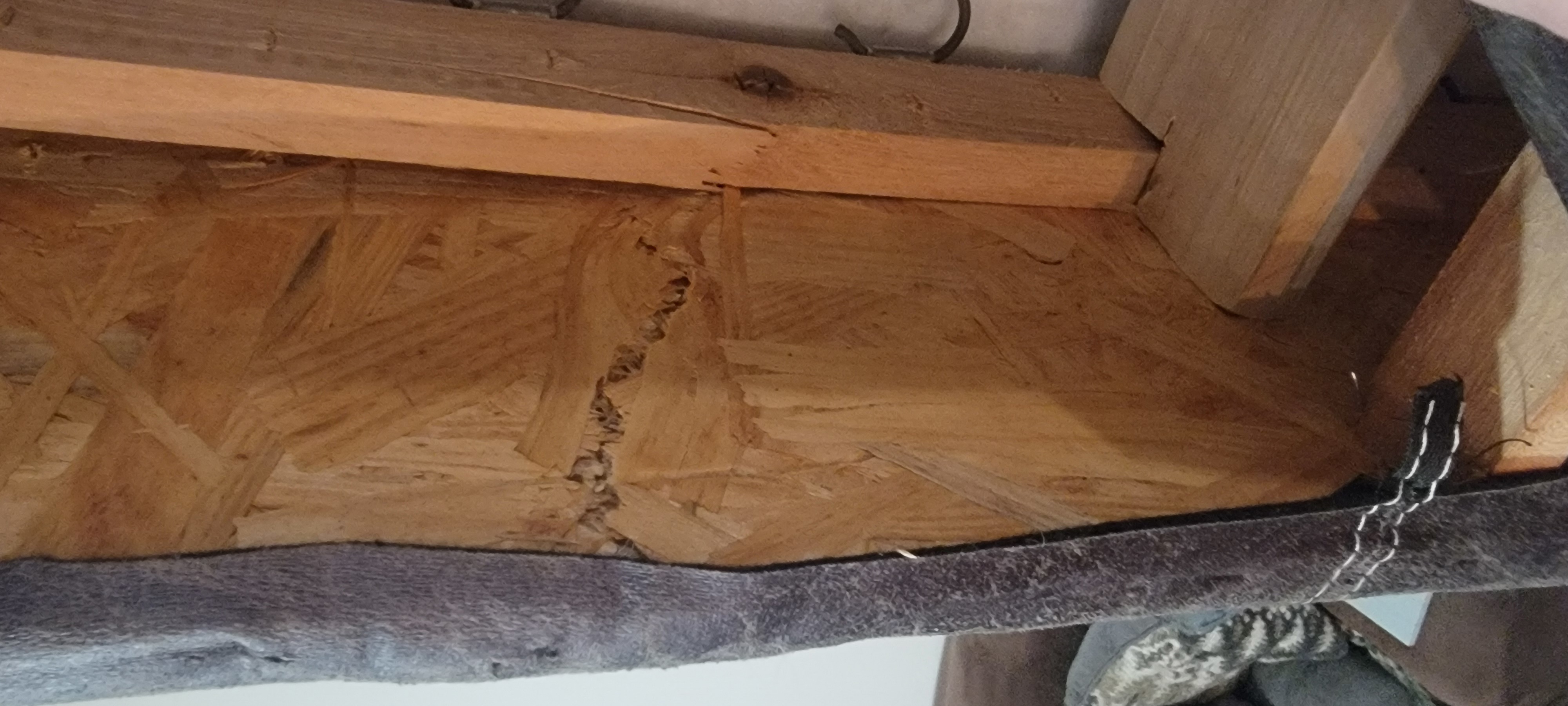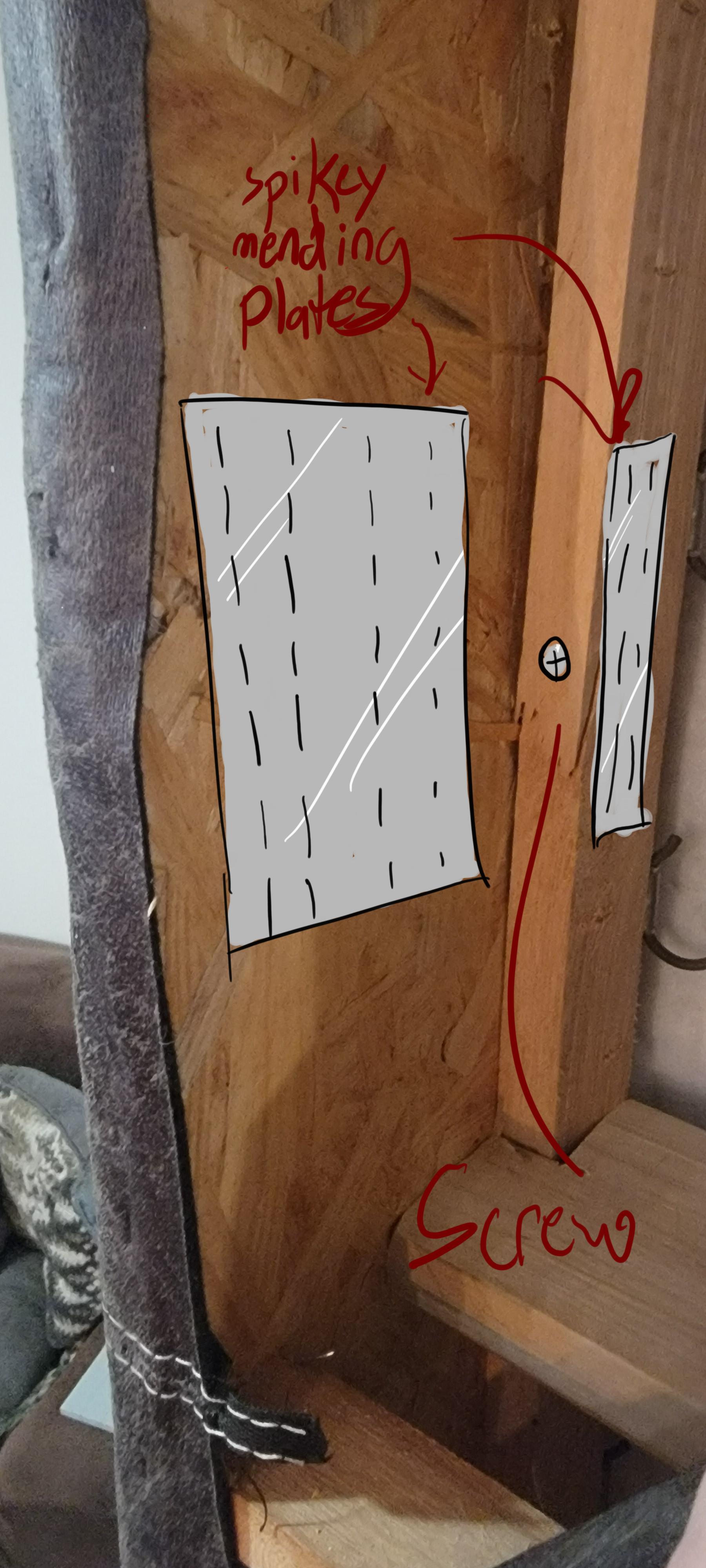My main question: How can I push these boards back together so I can secure them to each other, ultimately repairing the couch?
I don't have a shop, and not many tools, and I'd prefer not to detach the upholstery if I can, as I'm not confident in my ability to re-attach it. I also can't figure out how to detach the springs, and I hope it's not necessary.
Where I'm At
The boards running along the front are cracked, and so the couch sags. I opened up the bottom and I can see the springs are pulling out one of the boards from the other where they were stapled together.
So far, I've tried to pull out the staples so I can push the boards back together and clamp them. I haven't been able to get some of the staples out, they just won't budge, or I can't get leverage on them.
I managed to get a clamp around the boards, but I could only get on it at the part where the boards are close together. As I tighten the clamp, the boards won't budge at all, no moving back together at all. Maybe the staples are in the way, or maybe I just don't have the strength to turn the knob.
It's hard to tell from this pic, but the other end of the clamp is on the other side of the plywood, the flat side. I had to put the clamp much further down to even get it to reach the other side, see pic #3 further down. I thought I could push this section together to get the section in pic #5 together so I could get another clamp to bridge the larger gap, but it's not working.
Original Full Plan
Now let me share my original plan, so you can see the damage better, and have context about the clamps.
Couch Damage Photos
Flat board is plywood, you can see that the plywood and the smaller board, the spring strut, have cracked, and the staples attaching the strut to the plywood have failed.
I plan to:
Cut and pull out all staples in the way (failed, got about half out)
Clamp the strut to the plywood (Failed, clamp too small? and won't tighten further)
Use wood screws to screw the strut to the plywood
Squeeze epoxy (or wood glue if that would work) into the split wood and plyboard. If not possible to get glue in the cracks then...?
Attach mending plates to bridge the splits
I'll try to squeeze as much epoxy or wood glue as I can into the cracks before attaching the plates.





